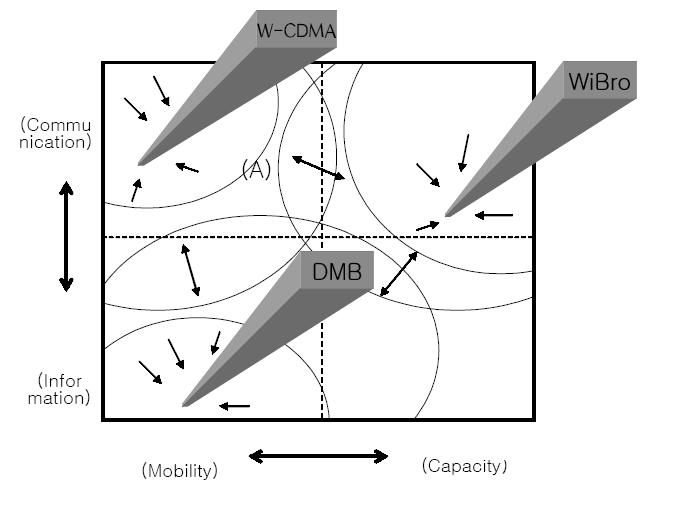Difference between revisions of "5. Is the Mobility(60km/h) enough?"
| Line 27: | Line 27: | ||
'''Product Differentiation between DMB & WCDMA & Wibro''' | '''Product Differentiation between DMB & WCDMA & Wibro''' | ||
[[Image:Product_Differentiation_DMB_WCDMA_Wibro.JPG]] | [[Image:Product_Differentiation_DMB_WCDMA_Wibro.JPG]] | ||
[[Image:WiBro_W-CDMA_Product Differentiation.JPG]] | [[Image:WiBro_W-CDMA_Product Differentiation.JPG]] | ||
Revision as of 06:51, 17 July 2006
The user's selection of services used to be based on the data-rate, mobility and coverage. But these kind of preferences are the choices of each individual preference. All user, of course, want the higher data-rate, more powerful mobility and wider coverage. But there are the trade-off in Wireless Service. It is difficule for the mobility and data-rate to coexist at once. Because of this "trade-off" in wireless service, there are product differentiation.
The Ficure of Wibro and W-CDMA shows the product differentiation; Wibro is following up the data-rate service position, W-CDMA is the mobility service position. For each service position wants the fitting CAPEX planning for their customers and customers could select their preferences between Wibro & W-CDMA.
So the mobility 60km/h of Wibro could be enough. Because the moto of Wibro at it's first phase is DSL in outdoor.
The Requirements of Wibro Services;
- Provide the way to use high speed internet service not only in home but also in outdoor → Equivalent data rate to xDSL per user
- Maximize the usage over the allocated spectrum
- Maximize the spectral efficiency
- Extend the service coverage
- Reduce the cost per bit
- Low power consumption at AT
- Faster handoff
Product Differentiation between DMB & WCDMA & Wibro

